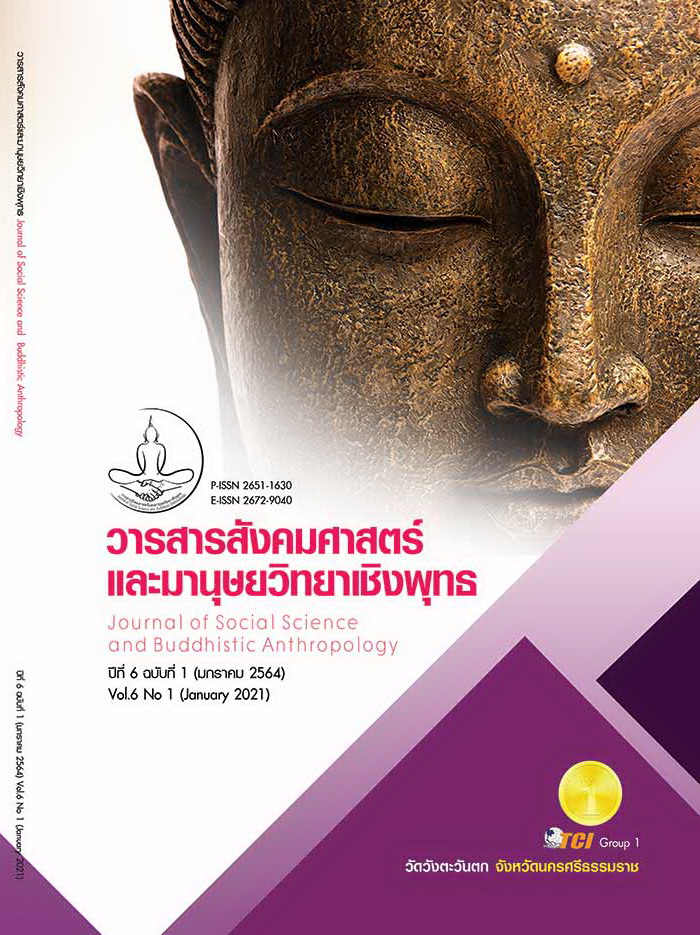A MODEL OF CORRUPTION AND FACTORS LEADING TO CORRUPTION IN THE PUBLIC SECTOR
Keywords:
Model, Corruption, Factors, The Public SectorAbstract
The objectives of this research article were to 1) the study of the tolerance of evidence checking and rigor in the government guard, 2) the sovereignty that influences the act of chrysalis and the public sector, and 3) the defense model. Furthermore, coaching corruption and misconduct in government organizations. There are eight populace of the range of informants and personnel working the bank, together with 400 people who contacted for carrier and complaints, the use of the Taro Yamane, T. components, and a proportionate random sampling. Data collection used questionnaires and analyzed descriptive data and content material analysis. The lookup findings have been as follows: 1) Corruption and misconduct of authorities officials. Still, a national problem was more significant, including a variety of complaints both of the public official's sectors and related sectors. It was a problem that ought to be solved seriously and urgently. 2) Factors in corruption and misconduct in authority organizations, particularly the internal audit system, intervention, and exercising of politicians' electricity. State administration to be being able to an example of a leader and law enforcement processes and inside elements are honesty. Opportunity and motivation, impersonation behavior and personal values, and attitudes toward corruption and 3) Prevention and suppression of corruption and misconduct in public organizations It is critical to consist of 1) authorities audit 2) self - discipline 3) regulation enforcement 4) practical attention 5) social measures 6) social models 7) social attitudes 8) instilling values and moral sense and 9) Support from the media
The lookup findings have been as follows: 1) Corruption and misconduct of authorities officials. Still, a national problem was more significant, including a variety of complaints both of the public official's sectors and related sectors. It was a problem that ought to be solved seriously and urgently. 2) Factors in corruption and misconduct in authority organizations, particularly the internal audit system, intervention, and exercising of politicians' electricity. State administration to be being able to an example of a leader and law enforcement processes and inside elements are honesty. Opportunity and motivation, impersonation behavior and personal values, and attitudes toward corruption and 3) Prevention and suppression of corruption and misconduct in public organizations It is critical to consist of 1) authorities audit 2) self-discipline 3) regulation enforcement 4) practical attention 5) social measures 6) social models 7) social attitudes 8) instilling values and moral sense and 9) Support from the media
References
กิตติศักดิ์ รัฐประเสริฐ และคณะ. (2557). การทุจริตในวงราชการไทย: การสังเคราะห์องค์ความรู้ด้านแนวทางการแก้ไขปัญหาจากผู้นำและบุคคลสำคัญของประเทศไทย. วารสาร มฉก.วิชาการ, 18(35), 61-74.
เกรียงศักดิ์ เจริญวงศ์ศักดิ์. (2547). กลเม็ดเด็ดปีกคอร์รัปชัน. กรุงเทพมหานคร: ชัคเซสมีเดีย.
จารุวรรณ สุขุมาลพงษ์. (2556). แนวโน้มของคอร์รัปชันในประเทศไทย. ใน รายงานการวิจัย. สำนักงานเลขาธิการสภาผู้แทนราษฎร.
ดิฐภัทร บวรชัย. (2560). รูปแบบการป้องกันการทุจริตและประพฤติมิชอบของเจ้าหน้าที่ตำรวจกรณีศึกษาระดับสถานีตำรวจ. ใน รายงานการวิจัย. สำนักงานคณะกรรมการวิจัยแห่งชาติ (วช.).
ไทยรัฐฉบับพิมพ์. (2562). คอร์รัปชัน “ไทย” ติด 99 จาก 180 ประเทศ. เรียกใช้เมื่อ 18 กรกฎาคม 2562 จาก https://www.thairath.co.th/news/business/1483145
ปิยะธิดา อภัยภักดิ์. (2561). แนวทางการป้องกันและปราบปรามการทุจริตคอร์รัปชันในหน่วยงานภาครัฐ. วารสารบัณฑิตวิทยาลัย มหาวิทยาลัยราชภัฏจันทรเกษม, 13(1), 1-12.
ผาสุก พงษ์ไพจิตร เเละคณะ. (2557). คอร์รัปชันในระบบราชการไทย: การสำรวจทัศนคติ ประสบการณ์ของหัวหน้าครัวเรือน. ใน รายงานการวิจัย. สำนักงานกองทุนสนับสนุนการวิจัย.
วิทยากร เชียงกูล. (2549). แนวทางปราบคอร์รัปชั่นอย่างได้ผล: เปรียบเทียบไทยกับประเทศอื่น. กรุงเทพมหานคร: สายธาร.
วิไลวัจส์ กฤษณะภูติ เเละคณะ. (2560). แนวทางการป้องกันและการแก้ไขการทุจริตคอร์รัปชันตามทัศนะของประชาชนภาคตะวันออกเฉียงเหนือ. วารสารราชนครินทร์, 1(1), 43-51.
สังศิต พิริยรังสรรค์ และคณะ. (2558). การต่อต้านการคอร์รัปชันมาตรการการควบคุมการเคลื่อนไหวของเงิน. ใน รายงานการวิจัย. สำนักงานเลขาธิการวุฒิสภา.
เสาวนีย์ ไทยรุ่งโรจน์. (2553). โครงการประเมินสถานการณ์ด้านการทุจริตในประเทศไทย. ใน รายงานการวิจัย. สำนักงานคณะกรรมการป้องกันและปราบปรามการทุจริตแห่งชาติ.
Asiedu, K. F. & Deffor, E. W. (2017). Fighting Corruption by Means of Effective Internal Audit Function: Evidence fromthe Ghanaian Public Sector. International Journal of Auditing, 21(1), 82-99.
Chapman, D. (2002). Corruption and the Education Sector. Retrieved December 20, 2019, from https://pdf.usaid.gov/pdf_docs/PNACT874.pdf
Cronbach, L. J. (1990). Essentials of psychological testing. (5th ed.). New York: Harper Collins Publishers.
Heyneman, S. P. (2004). Education and corruption. International Journal of Educational Development, 24(2004), 637-648.
Lasritad, K. et al. (2015). Effects of Accounting Practice Transparency on Financial Reporting Quality of Municipality in the Northeast Thailand. Journal of Humanities and Social Sciences Mahasarakham University, 34(4), 252-260.
Srivithaya, S. (2015). The Rule of Law and the Reconciliation by Buddhist Ways in ThaiSociety. Journal of MCU Peace Studies, 3(2), 20-29.
Yamane, T. (1973). Statistics: An Introductory Analysis. (3rd ed.). New York: Harper and Row Publication.








